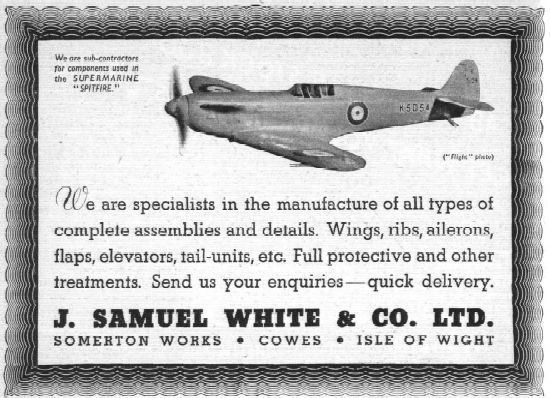Former type Private company Defunct 1981 Ceased operations 1981 | Industry Shipbuilding | |
 | ||
J. Samuel White was a British shipbuilding firm based in East Cowes, taking its name from John Samuel White (1838–1915).
Contents
It came to prominence during the Victorian era. During the 20th century it specialised in building destroyers for both the Royal Navy and export customers.
History
The family had a long tradition of shipbuilding in Kent, with James White constructing the cutter Lapwing for the Royal Navy at Broadstairs in 1763–1764, as well as fast vessels for the Revenue services and fishing smacks, and even a number of West Indiamen. At least three generations of the White family business undertook shipbuilding before Thomas White, (1773–1859) the grandfather of John Samuel White, moved from Broadstairs, to East Cowes on the northern coast of the Isle of Wight in 1802, where he acquired the shipbuilding site on the east bank of the River Medina where there was already more than a century of shipbuilding tradition. In the closing years of the Napoleonic War he began work on what would become the 'Thetis' Yard across the river on the West bank on the 'salterns' and marsh between the Medina and Arctic roads. It opened officially on 1 October 1815. White subsequently rebuilt the east bank site which in 1825 became the Falcon Yard.
Records indicate that by the 1850s White's docks with its steam sawmills and engine shops, and the mast and block shops, provided work for around 500 craftsmen. J Samuel White expanded still further in 1899. It rapidly became a world leader in the design and construction of small- to medium-sized naval and merchant ships, and also built numerous smaller craft, including more than 130 lifeboats for the RNLI, more than any other builder.
An order in 1911 of six destroyers for the Chilean Navy led to an expansion of the yard and the purchase of a large 80 ton hammerhead crane from Babcock & Wilcox of Renfrew, Scotland. The crane was installed in 1912 and still survives, last used in 2004, and now Grade II* listed.
These destroyers were fitted with White's own design of water-tube boiler, the White-Forster boiler. These were similar to contemporary three-drum boiler designs, but had a remarkable number of smaller tubes.
With the regular construction of turbines, boilers, steam and diesel engines, the East Cowes site became an engineering works. The general decline of shipbuilding in Britain led to the launch of the last vessel for the Royal Navy in 1963 and the closure of the shipyard. In 1981 the company finally ceased trading.
"Sammy" White has built well over two thousand vessels at their various shipyards at East Cowes between 1803 and their eventual closure in 1963.
Paul Hyland describes how White had grown during the succeeding century:
Sir Barnes Wallis, later famous as an aeronautical engineer, worked as a draughtsman for the company at the start of his career, before moving to Vickers to design airships.
Two White-built destroyers were preserved – ORP Błyskawica (the oldest preserved destroyer in the world) and HMS Cavalier (the only wartime destroyer preserved in the UK).
Aircraft production
In 1912 the company began constructing aircraft at East Cowes in a "Gridiron Shed" on the bank of the River Medina with Howard T. Wright as general manager and chief designer. Because of its location on The Isle of Wight the company choose the name Wight Aircraft.
Between 1912 and 1916 the company moved its aircraft manufacturing facilities across the river to Cowes and built a number of seaplanes:
In 1913 the company produced a flying boat which was displayed at the London Air Show at Olympia in 1913. The company also manufactured 110 Short Type 184 aircraft designed by Short Brothers.
Through 1916-1917 the company developed the Wight Quadruplane prototype fighter. This aircraft was tested at Martlesham Heath from 1917, and was written off in 1918.
